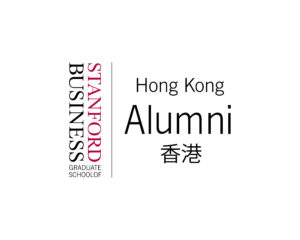From Bankruptcy to TV’s Mad Men & Global Dominance
Speaker Series: Ramesh Tainwala,
CEO & Executive Director, Samsonite International S.A.
CEO & President, Tumi Holdings, Inc,
Breakfast, Thursday, 26 January 2017, 08:00-10:00 am, China Club
How an Iconic Brand Almost Died & Then Revived
Event Details:
The Stanford GSB Chapter of Hong Kong is pleased to invite you to breakfast and conversation with Ramesh Tainwala, CEO of Samsonite International S.A., the world’s largest luggage company with 18.5% of the global market (roughly 2.5x LVMH, its closest competitor and 10x the next), with almost 40% of its sales coming from Asia-Pacific (USD 3 billion in sales, 9,800 employees and 1,600 stores in 100+ countries, worldwide). Of particular local note, Samsonite was among the pioneering int’l consumer goods companies to IPO in Hong Kong (June 2011), prior to Prada and preceded only by L’Occitane.
Under Ramesh’s leadership (who famously twice tried to resign before eventually rising to CEO, having been rejected from his management trainee application at Indian competitor VIP at age 22) total sales have increased more than 2x Asia-Pacific sector CAGR. In March 2016, a 20+ year goal of purchasing Tumi was achieved (which rebuffed an offer as recently as 2012), building upon earlier acquisitions of Speck, Gregory, Lipualt, Hartmann and High Sierra. Rival LVMH was quick to copy, buying Rimowa in October, continuing the unprecedented consolidation trend with the top 2 players going roughly rom 19% to almost 26% market share in less than 4 years.
During his tenure, Ramesh has accelerated the Company’s push into online sales, which grew by 40%+ in 2015 and are expected to represent 25% of total sales within 5 years. In China alone (where 70% of Samsonite’s products are made), there are 2,000 stores yet ecommerce has grown by 92.3%, with new brand Mailiant sold exclusively through JD.com online. In Korea, 2/3rds of all sales now come from Lotte.com. When running India, Ramesh created Samsonite’s first company owned-stores, necessary in a market of mom and pop retailers, but critical to how the Company, globally, later recaptured control of its distribution network and brand positioning. Ramesh also led the company’s repurchasing of its non-travel licenses (now 30% of total sales). Ramesh’s goal is to double Group sales to USD 5 billion by 2020.
But, like travel itself, Samsonite’s path has not always been smooth.
Founded in 1910 in Denver as the Shwayder Brothers Trunk Company, Samsonite started life with just one product – a travel trunk designed to withstand the heaviest use the American West could give it. A 1916 advertisement showing the four brothers and their father (collectively more than 1,000 pounds), standing on a suitcase succinctly made the point: “products as strong as Samson.” The 1969 advertising tagline, “if you traveled the way your luggage does, would you look as good as a Samsonite?” reflected the products’ durable/light positioning, echoed in the Mad Men episode, The Suitcase and perhaps most famously demonstrated with the 1977 Pittsburgh Steelers tackling luggage on-field (CLICK HERE). In its 1960s heyday, Samsonite was even the N. American manufacturer and distributor of Lego.
Having been sold to Beatrice Foods in 1973, controlling then 12% of the USA market (after a turnaround), it was then sold first to KKR, then the Riklis Family, and then to Astrum Int’l, before being re-listed in 1995. But 9-11 almost destroyed the company with the stock going from USD 44 to USD 5, and a new series of private equity owners stepping in – first Apollo, then in 2003 when weeks from bankruptcy, Ares & Bain Capital/Ontario Teachers. Following a turnaround under former Louis Vuitton executive, Marcello Bottoli the company was sold again in October 2007 to CVC for USD 1.7 billion just before the 2008 credit crises and a new near-death experience before recovering under CEO (now Chairman) Tim Parker. CVC and RBS fully exited their holdings in 2013.
Where does Samsonite go from here? Does it continue its past acquisition strategy of consolidation in a relatively fragmented market (the top five players account for less than 30% of global sales) or will it emphasize more strongly new brand creations (such as the lower-priced Kamiliant in India and Mailiant in China). How does it sustain growth when its very product success – durability – means its happiest customers replace their luggage less frequently than others?
The Stanford GSB Chapter of HK could not be more honored to have Ramesh share his insights, experience and wisdom on all of the above. We hope you can join us.
Speaker’s Bio: Ramesh Tainwala
Ramesh Tainwala, aged 56, is CEO and Executive Director of Samsonite International S.A. as well as President & CEO of Tumi Holdings, Inc, first joining the company’s Indian operations in 1995 and having been named to the board in 2011.
Prior to his current responsibilities, Mr Tainwala has served, inter alia, as COO of Samsonite Int’l; President, Asia Pacific and Middle East; Managing Director of Samsonite India; and COO of South Asia.
Mr Tainwala’s path to the CEO role started with a rejection at age 22 from rival Indian manufactuer for a management trainee job. Undeterred, working with an uncle’s friend, he quickly became one of VIP’s most important vendors and then, when running his own firm, Tainwala Chemicals & Plastics (India) Limited, was approached by Indian bank ICICI to take over a bankrupt customer, Gujarat BD Luggage that had a JV with American Tourister (later bought by Samsonite). This eventually led to a dialogue with Samsonite and an offer to be its 40% partner when the Company entered India in the 1990s. Mr Tainwala became MD of the operation with him eventually running all of Asia Pacific by 2011.


